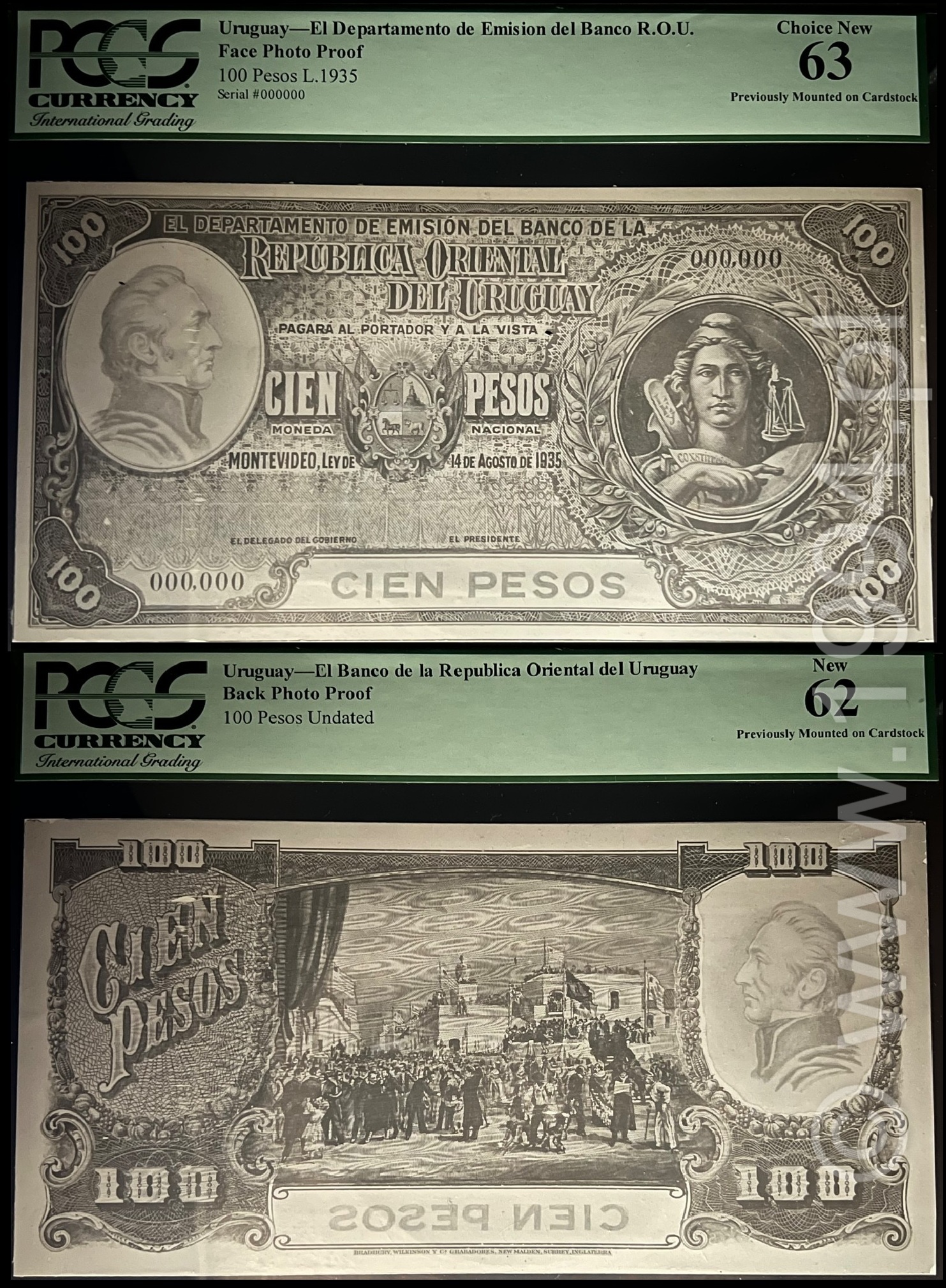Description and research notes
The 1935 100 Pesos proofs mark the modernization of Uruguay’s currency design as the nation entered the inter-war decade of industrialization. Printed by the American Bank Note Company in New York, these black-and-white photographic proofs precede the engraved master plates for the law of 8 August 1935, documenting a visual language that combined monumentality with art-deco restraint.
The face portrays José Gervasio Artigas alongside a seated allegorical female figure of Justice, signifying the moral foundation of the Republic, while the reverse introduces an expansive civic panorama—interpreted as Montevideo’s port ceremonial ground—executed in ABNC’s mature steel-engraving style. The fine cross-hatching and perspective depth illustrate how the company had evolved from the ornate 1890s idiom toward the geometric clarity of the 1930s.
Uruguay commissioned this redesign after the 1933 constitutional crisis to reaffirm institutional continuity and stabilize confidence in the peso oro. The Departamento de Emisión sought proofs that balanced artistry with security; ABNC’s engineers responded with recessed micro-line work and a simplified guilloche field compatible with new intaglio presses.
Very few complete face-and-back photographic pairs survive from this issue, as most remained locked in ABNC archives until dispersed in the 2000s. Graded PCGS 63 Choice New, this set captures the inter-war transition from classical allegory to modern bank-note minimalism—an aesthetic and political statement of Uruguay’s resilience in the Great Depression era.
